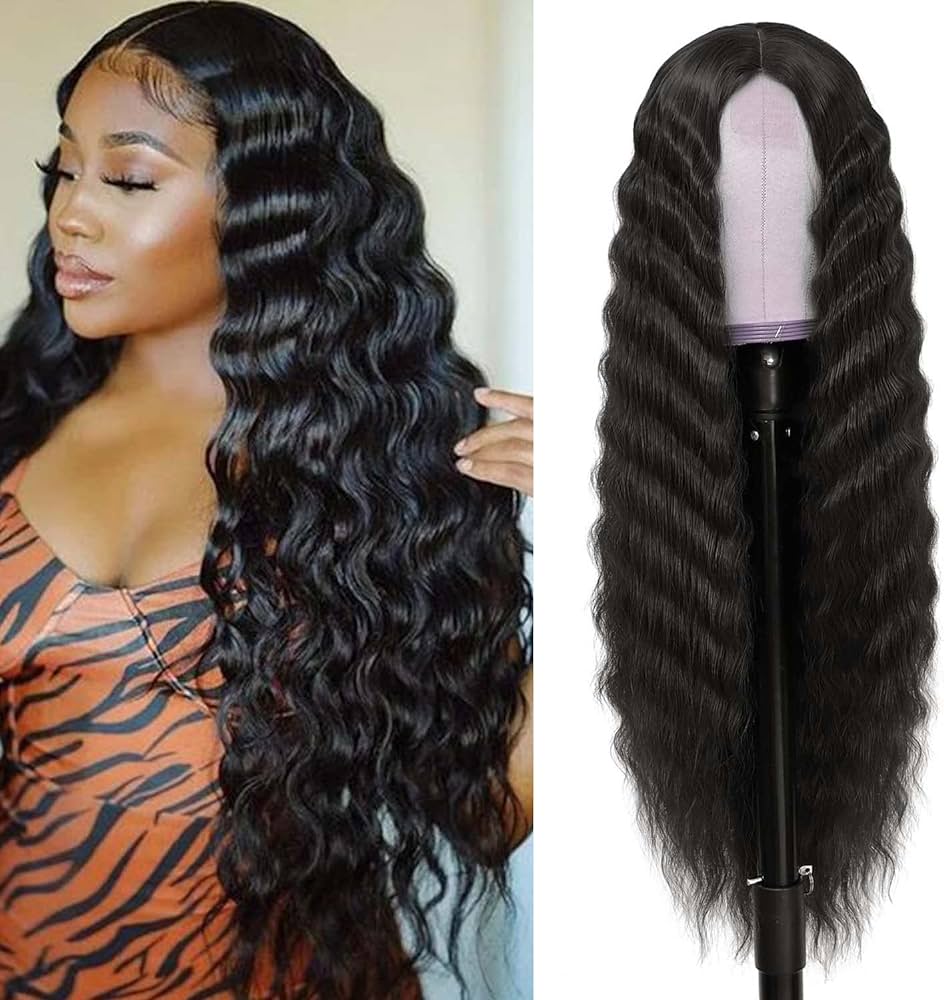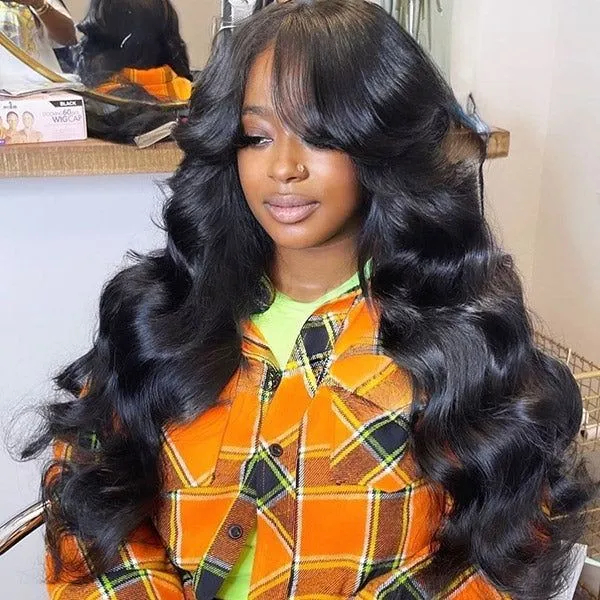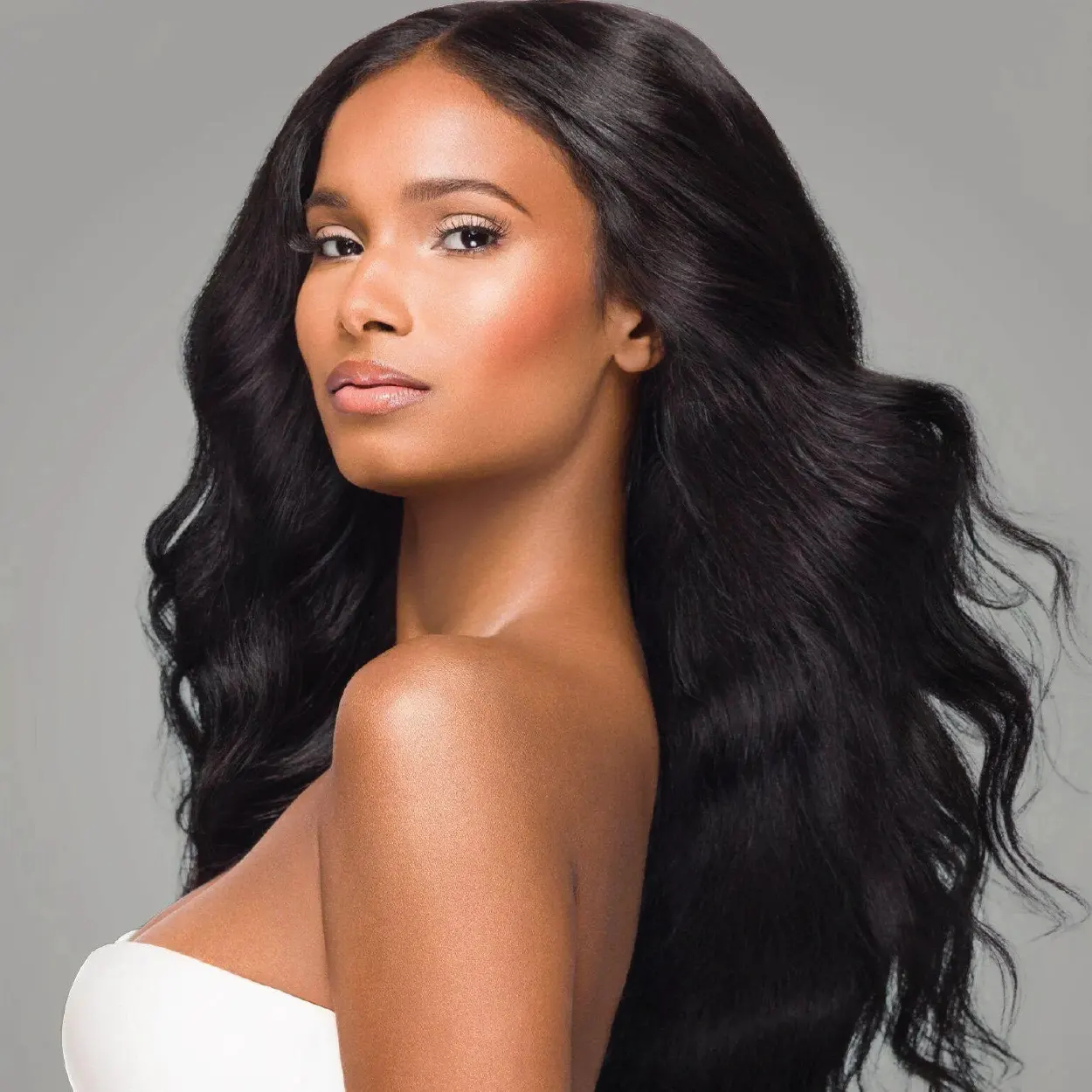
Introduction
Synthetic vs human hair – When it comes to choosing hair extensions or wigs, individuals are often faced with the decision between synthetic and human hair options. Both synthetic and human hair offer unique benefits and characteristics, and understanding the differences between the two can help individuals make informed decisions based on their preferences, lifestyle, and styling needs.
Synthetic hair is made from man-made fibers, typically a type of plastic called Kanekalon.
This material is designed to mimic the look and feel of natural hair, with advancements in manufacturing techniques allowing for realistic textures and colors. On the other hand, human hair extensions are crafted from genuine human hair, sourced from donors or through ethical and sustainable means. Each option presents distinct advantages and considerations that individuals should take into account when choosing the right type of hair for their desired look and lifestyle.
One of the key differences between synthetic vs human hair lies in their respective textures and styling capabilities.
Synthetic hair is pre-styled, meaning that the curl pattern, wave, or straightness is set during the manufacturing process and remains consistent over time. While this offers convenience and predictability, it also limits the versatility of styling options, as synthetic hair is not heat-resistant and cannot be curled or straightened with hot tools. In contrast, human hair provides greater flexibility for styling, as it can be curled, straightened, and even colored just like natural hair. This allows for a wider range of styling possibilities and the ability to adapt to different looks and preferences.
Another factor to consider is the durability and longevity of synthetic versus human hair.
Human hair is known for its durability and resilience, especially when properly cared for. With the right maintenance routine, human hair extensions can last for a year or more, retaining their softness and luster over time. Conversely, synthetic hair has a shorter lifespan and may require replacement more frequently, particularly with daily wear and regular washing. Additionally, synthetic hair is more susceptible to tangling and matting, which can impact its overall appearance and manageability.
 In terms of cost, synthetic hair often presents a more budget-friendly option compared to human hair extensions.
In terms of cost, synthetic hair often presents a more budget-friendly option compared to human hair extensions.
The affordability of synthetic hair makes it accessible to a wide range of individuals, allowing for experimentation with different styles and looks without a significant financial investment. On the other hand, human hair is generally priced higher due to its quality, authenticity, and longevity. While the initial cost may be higher, the extended lifespan and styling versatility of human hair can make it a worthwhile investment for those seeking a long-term solution for their hairstyling needs.
Furthermore, natural appearance is a significant consideration when comparing synthetic and human hair.
While synthetic hair has made significant advancements in mimicking the look and feel of natural hair, it may still lack the subtle nuances and realism of human hair. Human hair extensions blend seamlessly with natural hair, offering a flawless and undetectable integration that enhances the overall aesthetic. This natural appearance is particularly important for individuals seeking a seamless and authentic look, whether for everyday wear or special occasions.

One important aspect to consider when choosing between synthetic and human hair is maintenance.
Synthetic hair is relatively low-maintenance, as it retains its style even after washing. This means that you can enjoy the same styled look without having to spend time restyling your hair each day. On the other hand, human hair requires more regular maintenance, including washing, conditioning, and styling. However, this also means that you have the flexibility to change up your hairstyle and experiment with different looks as desired.
Another factor to keep in mind is the level of heat resistance.
Synthetic hair is not heat-resistant and should not be exposed to high temperatures, such as from hot styling tools, as it can melt or become damaged. This limits the styling options for synthetic hair, as you cannot use curling irons or straighteners to create different looks. Human hair, on the other hand, can withstand heat styling, allowing you to use hot tools to curl, straighten, or create waves according to your preference.
When it comes to color options, synthetic hair offers a wide range of vibrant and bold shades.
Since the color is set during the manufacturing process, synthetic hair provides consistent and long-lasting color. This makes it ideal for individuals who want to experiment with non-traditional hair colors or make a bold statement with their hairstyle. Human hair, however, offers more natural color options that blend seamlessly with your own hair. It can also be dyed and customized to match your desired shade or to add highlights and lowlights for a more personalized look.

In terms of comfort, both synthetic and human hair can provide a comfortable wearing experience.
However, some individuals may find that synthetic vs human hair feels heavier on the head compared to human hair. Synthetic hair also tends to have less breathability, which may lead to discomfort, particularly in warmer climates or during physical activities. Human hair, being natural, tends to feel lighter and more breathable, providing a more comfortable experience overall.
Lastly, it’s important to consider the ethical and sustainability aspects of synthetic and human hair.
Synthetic hair is manufactured, which means it does not rely on human donors or animal sources. This makes it a cruelty-free and vegan-friendly option. Human hair, on the other hand, is sourced from donors or through ethical means. It’s important to ensure that the human hair you choose comes from reputable and ethical sources to support fair trade practices and avoid supporting exploitative industries.
In conclusion
The choice between synthetic vs human hair ultimately depends on your personal preferences, styling needs, and budget. Synthetic hair offers convenience, affordability, and a wide range of pre-styled options, while human hair provides versatility, durability, a natural appearance, and the ability to style with heat. By considering factors such as maintenance, heat resistance, color options, comfort, and ethical considerations, you can make an informed decision and select the hair type that best suits your individual needs and desired hairstyle.
By exploring the differences between synthetic and human hair, individuals can make informed decisions that align with their unique preferences and hairstyling goals.
